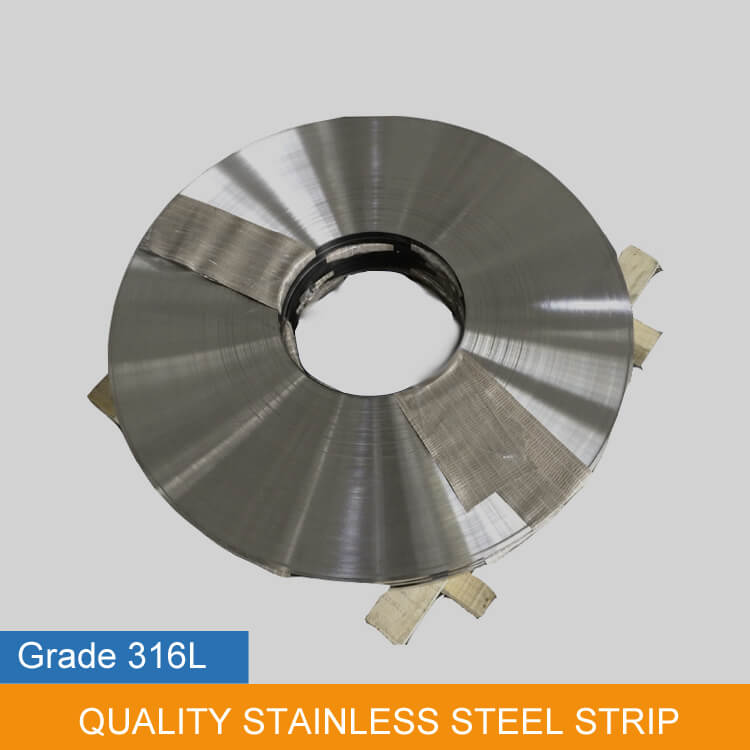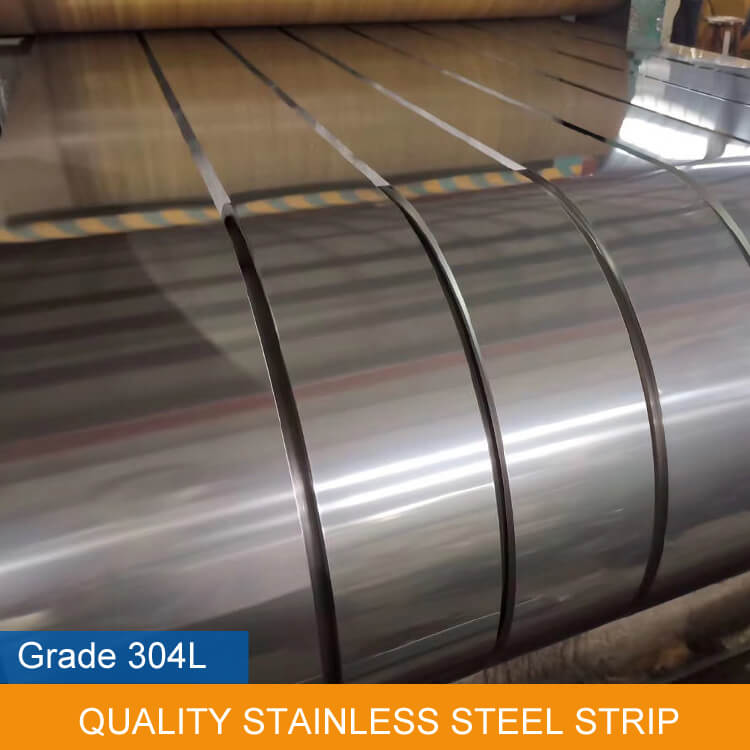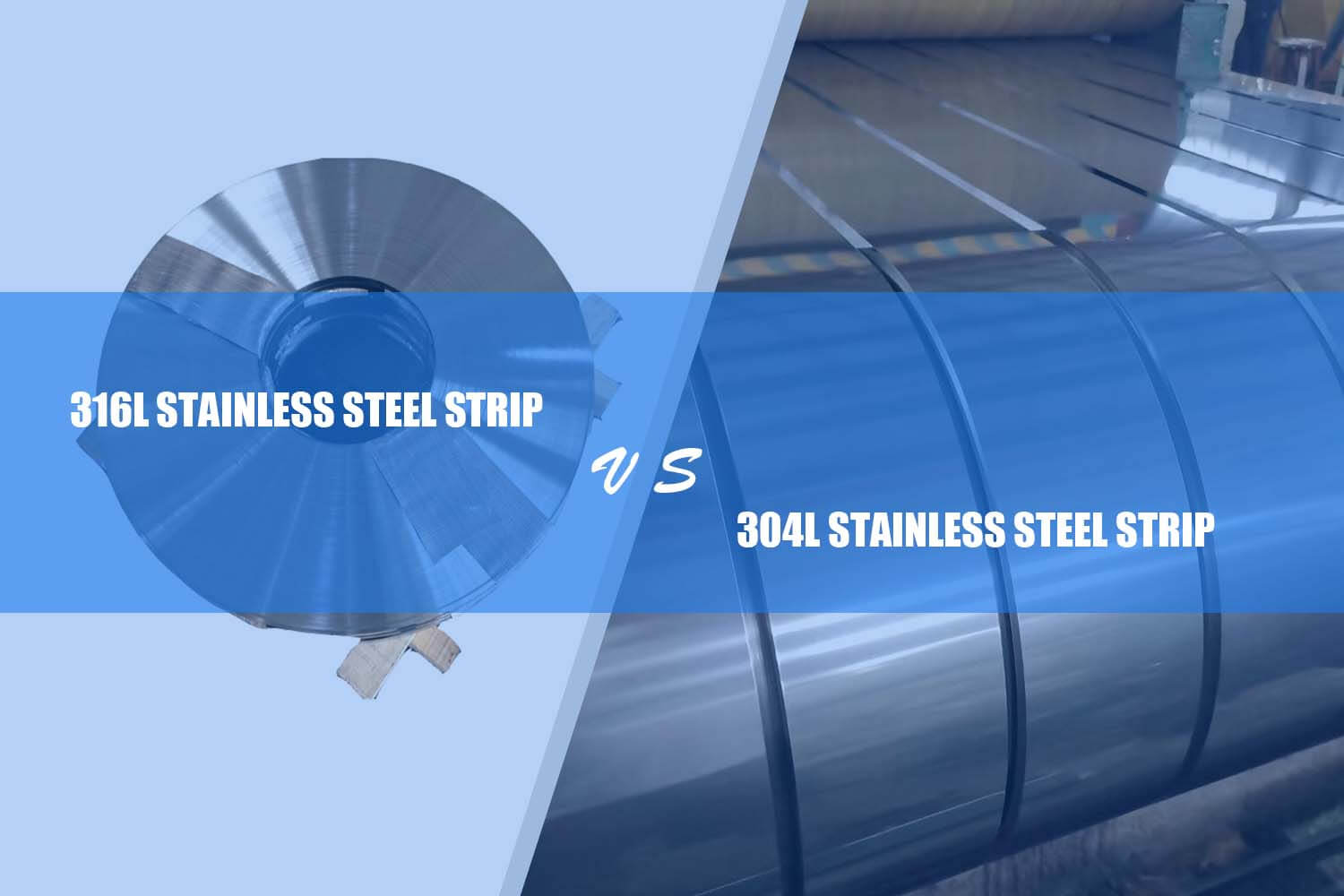Stainless steel strips are one of the most widely used products in the world due to its durability and longevity, but there are different types of stainless steel that offer different properties.
In today’s blog post, we will discuss the differences between gardes 316L and 304L stainless steel strip to help you determine which product is right for your project.
Let’s keep reading.
What is 316L Stainless Steel Strip?

316L stainless steel strip is almost identical to 316 grade strip.
316L stainless steel strip has lower carbon content imparts even better corrosion resistance than 316.
In addition to its superior corrosion resistance, 316L stainless steel strip also has excellent mechanical properties, including high strength and good ductility at elevated temperatures. It can be heat treated by conventional methods such as solution tempering, quenching and tempering or full hardening to produce hardened parts with high wear resistance.
316L stainless steel strip is widely used in food processing equipment such as sinks, drain boards and tables where it must withstand acidic solutions. In addition, it is often used for equipment exposed to sea water or other chemical environments where it must withstand corrosion from chlorides. HZW offer both polished and bright finish 316L stainless steel strip for your applications.
What is 304L Stainless Steel Strip?

304L stainless steel strip is 300 series stainless steel that is one of the most widely used metal strips due to its corrosion resistance and nice fabrication.
Both 304 and 304L stainless steel strips can be used for many similar applications and the differences are minor, but they really do exist.
304L stainless steel strip has lower carbon contents than 304 stainless steel strip.
Differences Between 316L Stainless Steel Strips and 304L Stainless Steel Strips
Chemical Composition
The chemical components of grade 316L stainless steel strip is summarized in the following table:
| Grade | Standard | C | Si | Mn | P | S | Cr | Ni | Mo |
| 316L | ASTM A240 | ≤0.03 | ≤1.00 | ≤2.00 | ≤0.045 | ≤0.030 | 16.00-18.00 | 10.00-14.00 | 2.00-3.00 |
The chemical components of grade 304L stainless steel strip is summarized in the following table:
| Grade | Standard | C | Si | Mn | P | S | Cr | Ni | Mo |
| 304L | ASTM A240 | ≤0.03 | ≤1.00 | ≤2.00 | ≤0.045 | ≤0.030 | 18.00-20.00 | 9.00-12.00 | – |
Mechanical Properties
316L Stainless Steel Strip Mechanical Properties
| Grade | Yield Strength 0.2% offset (KSI) | Tensile Strength (KSI) | % Elongation (2″ Gauge length) |
| 316L | 25 min. | 70 min. | 40 min. |
304L Stainless Steel Strip Mechanical Properties
| Grade | Yield Strength 0.2% offset (KSI) | Tensile Strength (KSI) | % Elongation (2″ Gauge length) |
| 304 | ≥205 | ≥515 | 40 min. |
Applications
What Is 316L Stainless Steel Strip Used For?
- Chemical and petrochemical industry
- Food processing
- Pharmaceutical equipment
- Medical devices
- Potable water
- Wastewater treatment
- Marine applications
What Is 304L Stainless Steel Strip Used For?
304L stainless steel strip is widely used in automotive structures, chemical industry, food processing industry, marine environment industry, springs, welded parts and heat exchangers industry.
304L stainless steel strip can be also used in heavy industrial applications, especially in high-corrosion environments.












